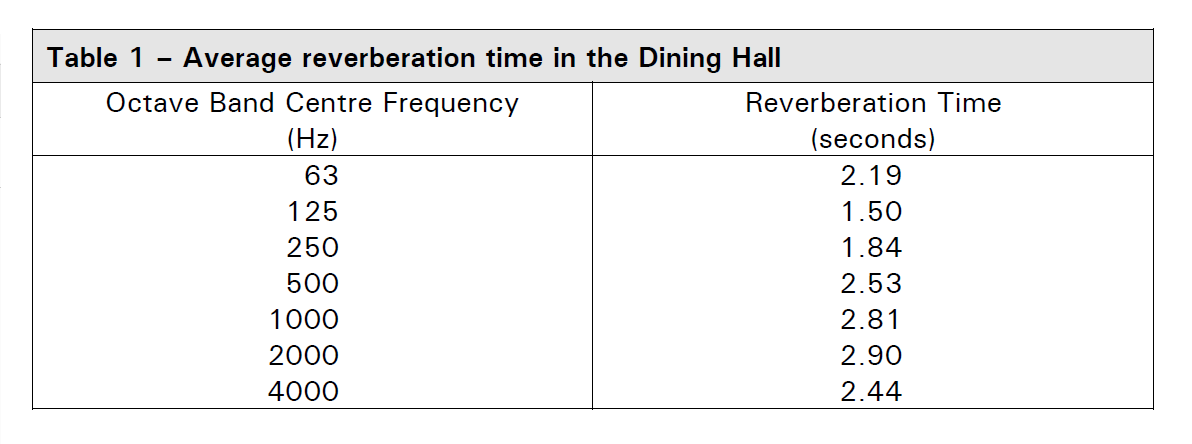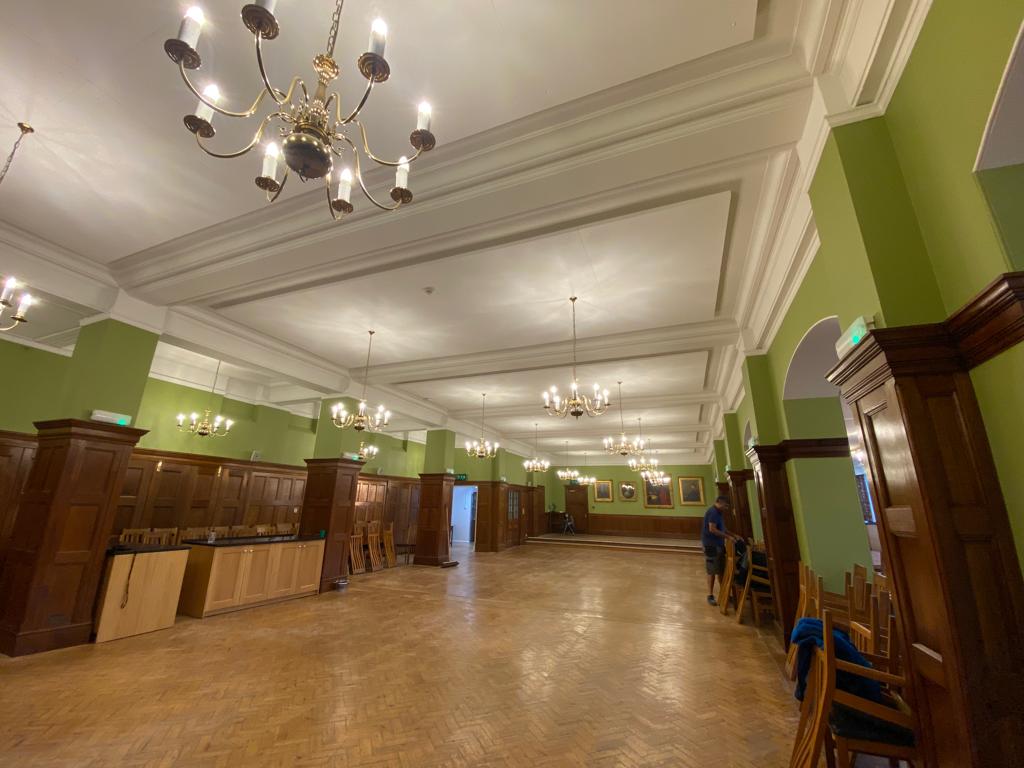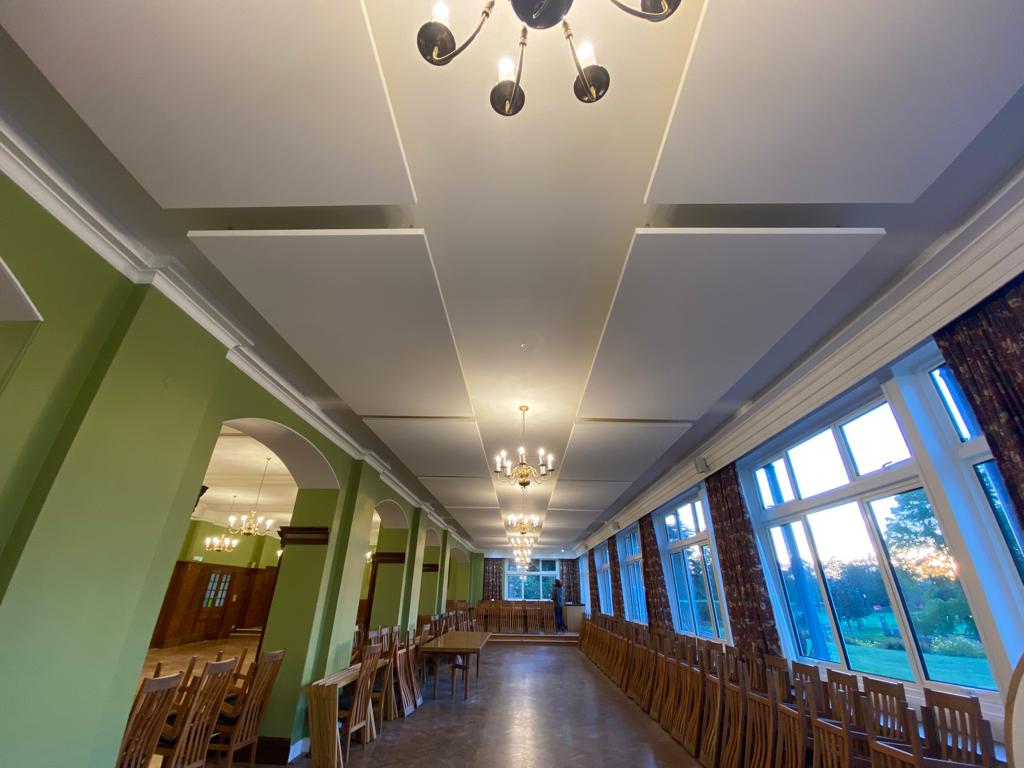BLOG 'A chronology of soundproofing systems London'
Step 1: Measurements of the internal reverberation times were conducted within the Dining Hall, employing the interrupted noise method, in accordance with BS EN ISO 3382-2:2008.
This method involved producing broadband noise, through an omnidirectional loudspeaker; after a period of time, where a steady state sound field had been established, the noise was abruptly cut off and the resulting noise decay was measured with an omnidirectional microphone and sound analyser.
For each measurement, the noise decay was measured in seconds, in third octave frequency bands, from 50 Hz to 5000 Hz. The third octave figures were then arithmetically averaged to provide octave band reverberation times, from 63 Hz to 4000 Hz, presented in the table below:
Step 2: Two absorptive treatment proposals were developed, for application to the Dining Hall ceiling – mindful of the existing architectural features, including chandeliers and decorative fibrous plaster mouldings.
Step 3: The existing measured reverberation times, combined with the volume of the space and the proposed areas and absorption coefficient data for the treatment proposals were then used to calculate the predicted reverberation times, with the treatments in place, presented in the table below:
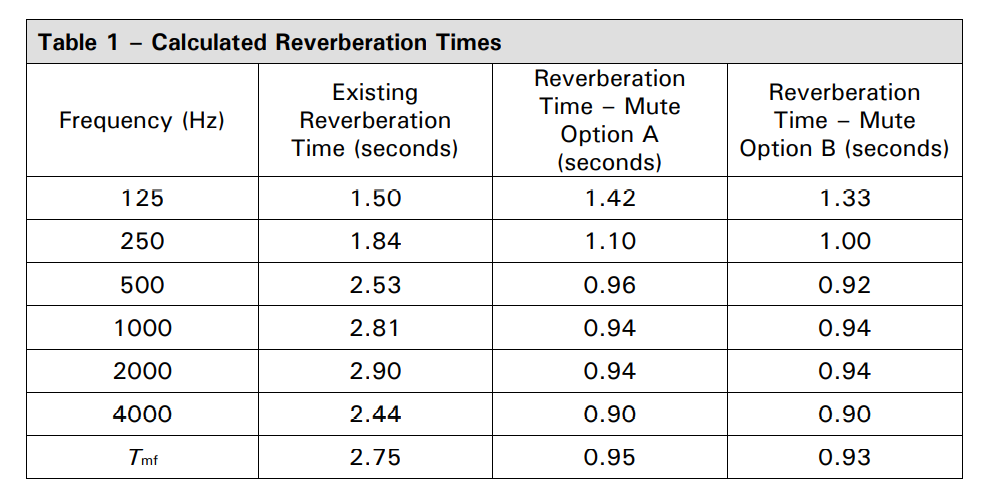
Step 4: The client selected absorptive treatment proposal B, which was installed over four days. The images below show the completed installation.

 +44 (0) 20 3858 0833
+44 (0) 20 3858 0833 email
email

